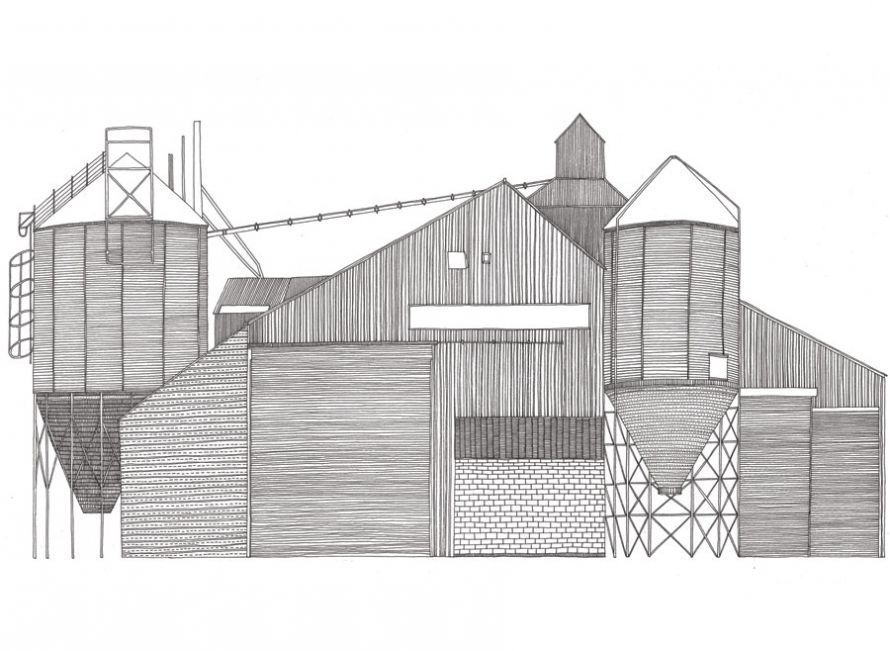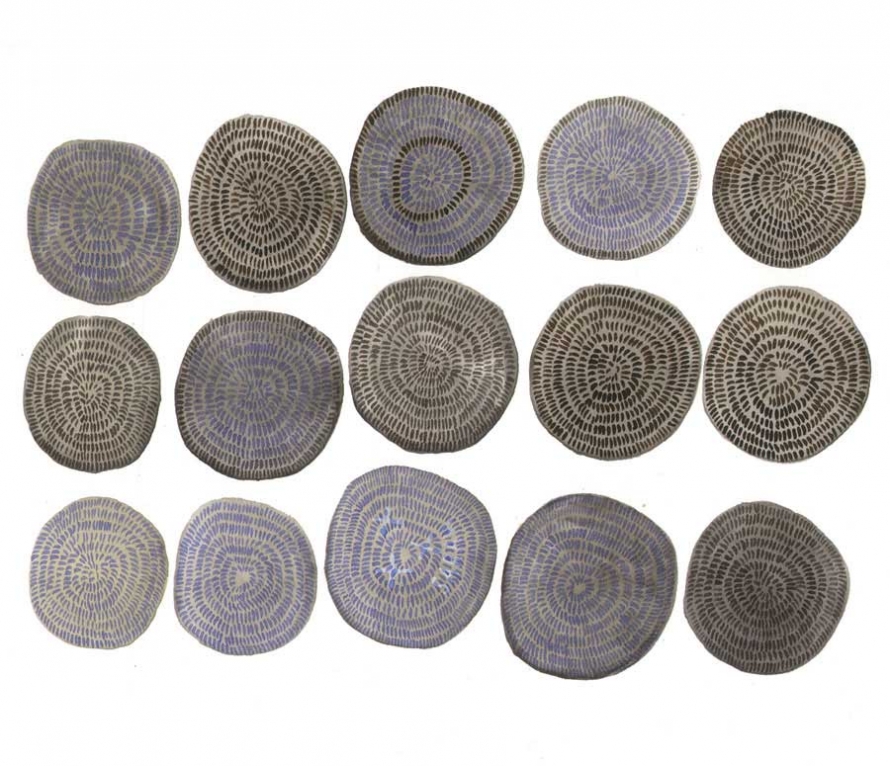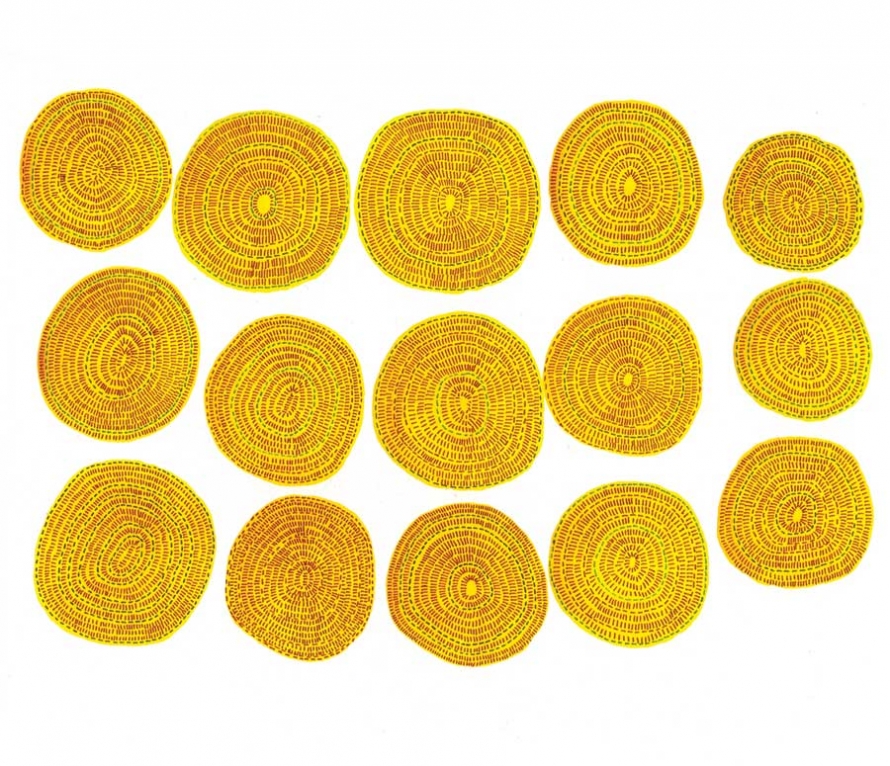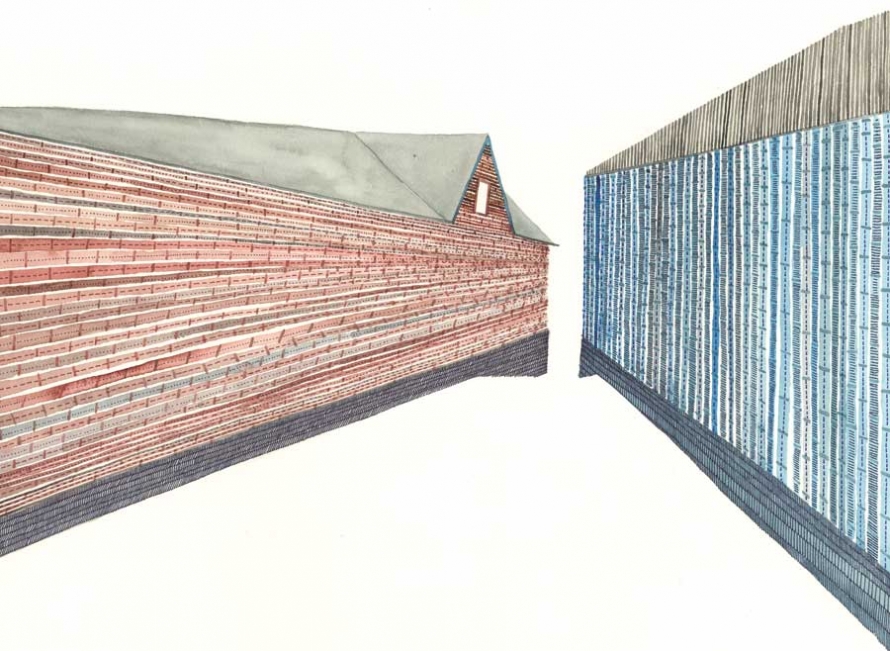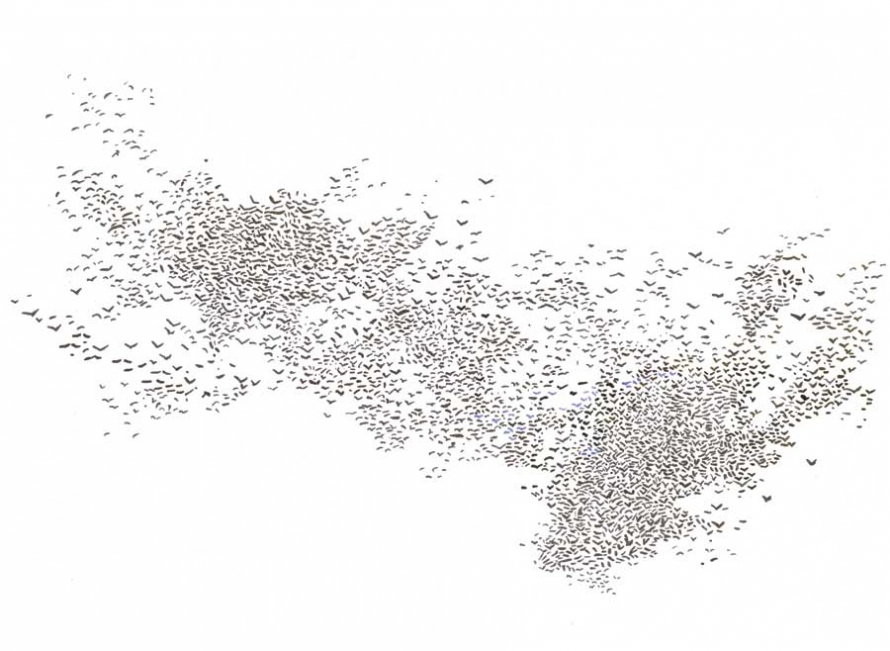Nigel Peake’s new book In The Wilds is a lovely collection of drawings about farms, fields, and birds. It is pretty much irresistible, taken from childhood impressions and Peake’s current life in a one-road Irish village, where he is mistaken for the postman. A show of In The Wilds will open this Friday, May 13, 2011, at Needles & Pens in San Francisco.
Nigel Peake is an illustrator currently living in Ireland. He was trained as an architect at the University of Edinburgh and in 2005 was awarded a Silver Medal commendation by the Royal Institute of British Architects (RIBA) for his thesis project. Peake’s drawings and paintings have been exhibited in various corners of the world, and he has worked on number of commercial projects with a range of clients that include Hermès, Ninja Tunes, the Royal Horticultural Society, Habitat, and Dwell magazine. Books by the author include Sheds, Maps, and Ghost Houses.
What did the countryside mean to you when you were a child?
I grew up in the country. From time to time I have lived in cities, and I visit them often for work, but I still live close to the country, at the moment on the coast in a one-street village.
As a child I used to draw a lot, play cricket with my brothers, fill up school books with homework of looped text and neat diagrams in ruled boxes, and go for evening walks to meet my father coming home from work. Twenty years on, I still draw, make books, go for walks, and instead of playing cricket I tend to listen to it on the radio. The country is peaceful. It is a place to draw and work and be surrounded by things that we could never make.
I recently found out that the people in the village where I live think I am a postman, which is nice because I like the post, but also because you can make drawings without anyone knowing.
How much farming is there in your life these days?
My observations of farms and the land are from an outsider’s view. Gleaned from observations as I used to sit at my table doing homework watching the farmers and their machines work the land. This book is a record of a quiet place that nearly everyone has visited at some point, and the farmland is part of this—a place where the lanes of farms run along the lake that is beside the hill of trees that is neighbor to open spaces.
The drawings in In The Wilds show signs of long contemplation. As an artist, are you drawn more to stillness or action?
I am pretty sure I enjoy both. The country is a place where you can observe all the parts at once—in the city these parts are played at the same time at different volumes in a flurry of color and noise. Both the still and the animated hold a lot of wonder and joy and are so full of potential.
But even when the subject of one of the drawings is something wild, the result is rather organized and formal. Are the patterns you draw found in nature or do they come from you?
I would say that most of my work is a combination of fact and fiction. I like to look at things, remember them, forget them, and then re-imagine and think of them when I am drawing and allow them to move around. The process of drawing is working these things out on the page. Like a conversation between two friends who have not seen each other in a while.
What are you working on now?
Right now, I am answering your questions from a plane to San Francisco where I’m traveling for an exhibition of the work from this book at Needles & Pens (opening Friday this week, May 13th). I have a few weeks here then when I get back home I have a few projects to draw.
I do not really like to talk about the things that I have not yet done. I do not remember who said it, but it was something like this: “Do not pay attention to what artists say they are going to do, but rather to what they do and make.”
